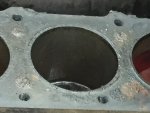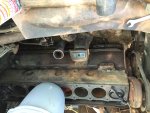Master Cylinder
Member
Pulled the head from my 1949 Buick Sedanette and my mechanic remarked that the cylinders appear to have sleeves inserted in them. I could see the "ring" he pointed out at the top of the cylinder wall on all eight cylinders. Was this factory or done as part of a rebuild?




